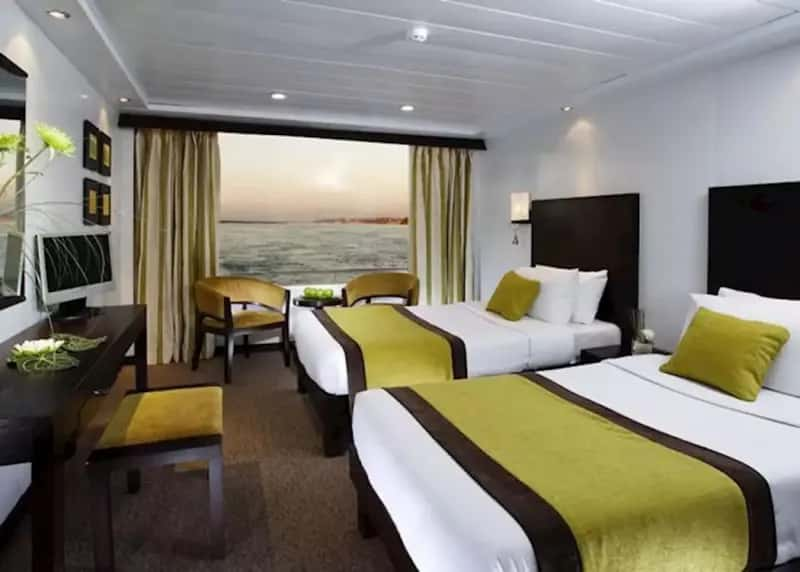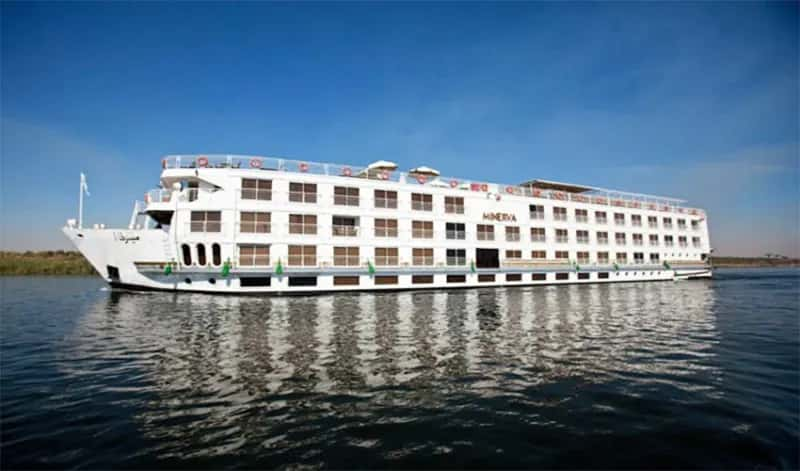
Islamic Cairo is the historic heart of the city, dating back to an era prior to the architectural complex of Downtown which occupies the center of the modern part, or rather the current extension that stretches north, south and west towards the pyramids of Giza. When the Fatimid dynasty conquered Egypt in 969 BC. C., this had a new capital built north of the already existing city as a center for the administrative functions of the caliphate.
This new city, called Al Qahira (the Subjugator), gave the modern part its name. Fustat, the original Islamic city in Egypt, was later destroyed by fire in 1168, started to prevent the conquest of Cairo by the Crusader armies.
Although it is no longer the physical center of the city, Islamic Cairo remains a living memory of its past.
Most of the ancient walls have collapsed, but hundreds of monuments and magnificent mosques still remain along the city's historic thoroughfares.
The uniqueness of Islamic Cairo as a historic district is also given by the great vitality that distinguishes it. Although Al Qahira was rapidly urbanized with palaces and administrative buildings in the early days of its planning, the population of the city moved within the walls during the 12th century, and it has not been abandoned since. Despite its dilapidated style and rather dated buildings, Islamic Cairo remains one of the most populated areas of Cairo, and its monumental backdrop intertwines with the daily life traffic of millions of Egyptians.
Visiting Islamic Cairo can be daunting. It is a fairly large area, which includes the ancient Fatimid city and the southern quarters next to the Citadel of Saladin and the mosque of Ibn Tulun. Literally hundreds of nooks and crannies of various sizes and importance can be found in these narrow lanes. Furthermore, the fact that it is still a fairly busy commercial area represents another aspect of this challenge.
The greatest concentration of monumental sites in Islamic Cairo is found in Sharia al Mu'izz Al Deen, which runs between Bab Al-Futuh and Bab Zuweila, the entrance to the original Fatimid city. This road was the main thoroughfare of the city and many of the Fatimid and Mamluk buildings were built here. This street also gave its name to Naguib Mahfouz's novel 'Palace Walk'. The northern part (between Bab el Futuh and Khan el Khalili) has been recently restored. This is one of the most suggestive areas of the city. The Qalawun complex is by far one of the most spectacular buildings in the city. It would be easy to spend a day there to spend the evening in the world famous 14th century souk, Khan el Khalili.
Restoration works on the northern side of the road (from the Al Ghouria complex towards Bab Zuweila) began in 2011. In the vicinity of Khan el Khalili there is also the famous Al Azhar mosque, built by the Fatimids in 972 BC; its structure is included in the grounds of one of the oldest universities in the world, which still represents an influential institution in Islamic thought.
The southern area of Islamic Cairo offers some of the most impressive and impressive monuments in the city. The construction of the Cairo Citadel began under the aegis of the Ayyubid general Saladin (Salah Al Deen) in the 12th century as a local government seat, and maintained this function until the 19th century, when it was moved to the Abdeen Palace in Downtown. Today the Citadel offers a breathtaking view of the city and houses various museums dedicated to the Egyptian police and army.
Inside there are also three important mosques. The oldest, the Al Nasir Muhammed mosque, was built in the Mamluk style in 1335; the Suleyman Pasha mosque, built in 1528 after Egypt fell under the control of the Ottoman Empire; the Ali Alabaster mosque, a notable addition named after the man considered the father of modern Egypt.
Below the Citadel is the majestic Sultan Hassan mosque, built in the 14th century by the homonymous sultan. This impressive structure was built as a madrasa (religious school) and bears some of the most impressive architectural decoration ever seen in a mosque. The same has suffered some damage over time also because its proximity to the Citadel led it to fulfill the function of a military fortress in times of political unrest.
The Ibn Tulun mosque is located at an equivalent distance between the Citadel and the Sultan Hassan mosque. Built in 872 AD, this is one of the oldest mosques as well as the most significant in size. Its imposing structure exhibits the characteristic architectural style of Samarra due to its construction in the Abbasid era, when the rulers of Egypt came from Iraq. Although not among the most popular tourist destinations, the unique style of its internal courtyard is well worth a visit. Additionally, within the walls is the Gayer Anderson Museum, a 12th-century mansion expertly restored by a British colonial officer during the 1930s. Its proximity to the Citadel,
Al Azhar Park is a recent element of Islamic Cairo. For centuries, Cairenes have thrown their rubbish beyond the walls and the result was a massive mountain of rubbish that towered over the city. In the 1990s, the Egyptian government launched a recovery plan for the area and converted it into a splendid green space. Today Al Azhar is a 74-acre park, in a city woefully lacking in green spaces.
This beautiful aerial offers a spectacular view of the city from its lawns, gardens and ponds. There are also cafes and beautiful restaurants. Viewing the sunset from this park hearing the echo of prayer from thousands of minarets is a memorable experience.
YOU Can Visit Egypt by choosing one of our EGYPT TOUR PACKAGES
“In my opinion, I believe a good writer makes content easy to read, and entertains the reader, making comprehension effortless.
By Kate Clark.webp.webp&w=3840&q=60)
Discover Egypt with this exclusive five-day Cairo and Luxor tour. Experience the Egyptian history by visiting pyramids a ...
$ 589 | Per Person

Cruise the nile aboard MS Movenpick Royal Lily Nile Cruise & Explore the wonders of the ancient Egypt along the Nile Riv ...
$ 699 | Per Person

Steigenberger Minerva Nile Cruise: Enjoy sailing the Nile River between Luxor and Aswan aboard the fascinating Steigenbe ...
$ 599 | Per Person